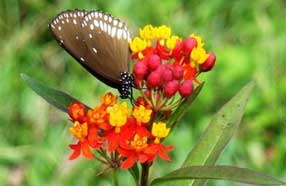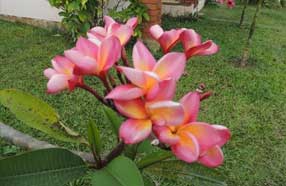Flora in Nagarahole National Park
Nagarahole National Park is a popular wildlife destination in Karnataka, nestled in the Kodagu and Mysore districts. The national park is predominantly popular for its wide variety of flora and fauna. The wildlife safari in Nagarahole also provides a deep insight into the national park’s flora species. The driver and the guide that accompanies tourists during the wildlife safari provide detailed information about the forest type and vegetation.
A significant portion of the Nagarahole forest is abundant with diverse and remarkable flora. The area is rich in various species of sandalwood, rosewood, and teakwood, along with other notable trees such as Crocodile Bark, Crêpe Myrtle, Silver Oak, Cotton Tree, Kadam Tree, and Indian Kino Tree. The flora is well-suited to the dry and deciduous conditions of the Nagarahole forest, which also boasts a large number of flowering trees.
The national park's botanical diversity is both impressive and captivating, offering visitors a glimpse of nature's true beauty. A rich collection of grasses, shrubs, alpine flowers, mosses, and lichens further enhances the area’s natural charm. Spanning 643.39 sq km, the National Park is home to 1,337 species, 14 subspecies, and 34 varieties of angiosperms, encompassing 754 genera and 152 families. Among these, 110 species are particularly widespread. We maintain a comprehensive list of all the flora species observed within the park.



Most Popular Flora Species in Nagarahole
Crêpe Myrtle
The Crêpe Myrtle tree reaches a height of 15 to 25 feet with a spread of 6 to 15 feet when fully mature. Its growth is influenced by ideal planting conditions and available resources. It typically takes five to ten years for this tree to reach full maturity. Known for its stunning summer blooms, it is considered a top-class flowering tree.
Silver Oak
The Silver Oak tree has a lifespan of up to a hundred years, with its durability enhanced by the variety of soils in which it thrives. Its growth rate is notably fast, and it also offers significant medicinal benefits, making it a valuable species.
Indian Kino Tree
This tree is known for its ability to help reduce symptoms of diabetes and lower the risk of various other diseases. The tree's fluorescent green foliage and bright yellow flowers have therapeutic properties, providing a visually delightful and beneficial experience for visitors.

